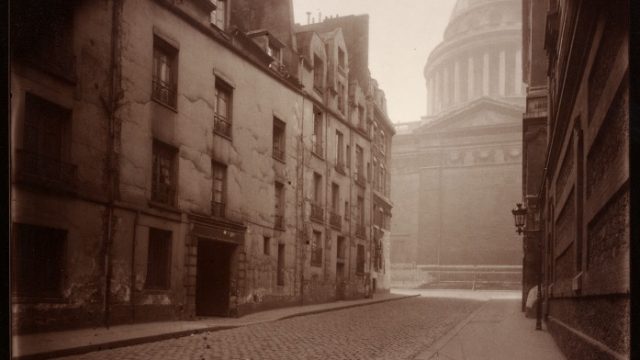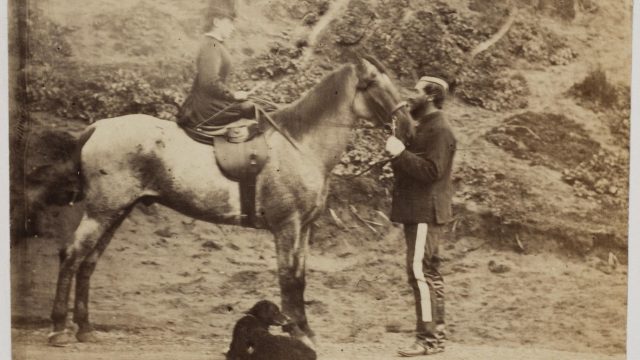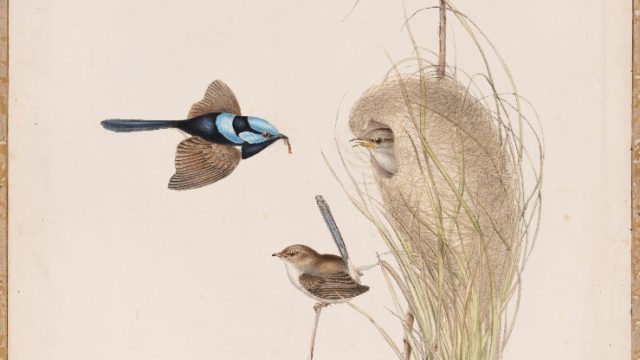This weekend the world will turn green, in celebration of St. Patrick’s Day on Monday 17th March. We here in the Word and Image Department have donned our shamrocks and found the best examples of ephemera associated with the Emerald Isle in our collection to share with you today.
Life of St. Patrick, Phoebe Anna Traquair, 1852-1936. Museum no. E.4886-1968. © Victoria and Albert Museum, London.
First, the man himself. This design for an enamelled plaque depicts St. Patrick in red, holding a staff made from ash. Best known for driving the snakes out of Ireland, St. Patrick led a hugely exciting life. Born in the south-west of Scotland, he was kidnapped by pirates at the age of 16 and taken to Ireland to work as a shepherd. Whilst he was in Ireland he converted to Christianity. He escaped in his early twenties, but later returned to Ireland as a Christian missionary.
Design, Firm of John Brogden, ca. 1860s. Museum no. E.2:861-1986. © Victoria and Albert Museum, London.
The shamrock is one of the principal symbols associated with Ireland and St. Patrick’s Day (along with Guinness, but more about that later…). St. Patrick is said to have used the three leaves of the shamrock to explain the Holy Trinity to the Irish people. This design for a cross illustrates this religious association. Interestingly, the shamrock was also considered sacred in pre-Christian Ireland. Three was a sacred number in Celtic religion, and the three leaves of the shamrock were said to represent the ‘Triple Goddesses’ of Brighid, Ériu and The Morrígan.
4096: Trust Time (miniature version), David Glynn, 1955. Museum no. E. 978-2008. © David Glynn.
Looking at this object, you may have a similar reaction to me, and wonder what on earth it has to do with St. Patrick’s Day? This miniature colour inkjet print is a fascinating piece of contemporary digital art, made in 1995. The artist was inspired by the Book of Kells, a highly illuminated manuscript, made around 800, on display in Trinity College Library, Dublin. The relationship between old and new, from the style of picture to the techniques used to produce the image, is incredible.
Guinness for Strength, designed by Richard Francis Percy Wilkinson, and issued by Arthur Guinness Son & Co. Ltd, 1952. Museum no. E.1925-1952. © Victoria and Albert Museum, London.
Continuing with the theme of contemporary Irish culture, I give you this iconic poster from an advertising campaign in the 1950s. Playing on a theme long associated with Popeye and spinach, Guinness’ high iron content is promoted as giving the consumer immeasurable strength. Arthur Guinness started brewing ‘the black stuff’ in 1759 at the St. James’ Gate Brewery, Dublin. On 31 December 1759 he signed a 9,000 year lease at £45 per annum; certainly value for money, given that 850 million litres are consumed each year.
An Irish flute player dancing a jig, William Low, 1832. Museum no. E. 457-1924. © Victoria and Albert Museum, London.
Having consumed several pints of the aforementioned alcoholic beverage, you may be in the mood for a little dancing. This talented chap is simultaneously playing the flute and dancing an Irish jig! William Low was a printmaker in the nineteenth century who specialised in Irish themes, this being a preliminary sketch for a book illustration.
I hope we have provided you with some good ideas and inspiration for how to celebrate St. Patrick’s Day. If you would like to see any of these objects or anything else in the collection, please book an appointment and come and see us in the Prints & Drawings Study Room.








Thxs 4 ur interesting page.